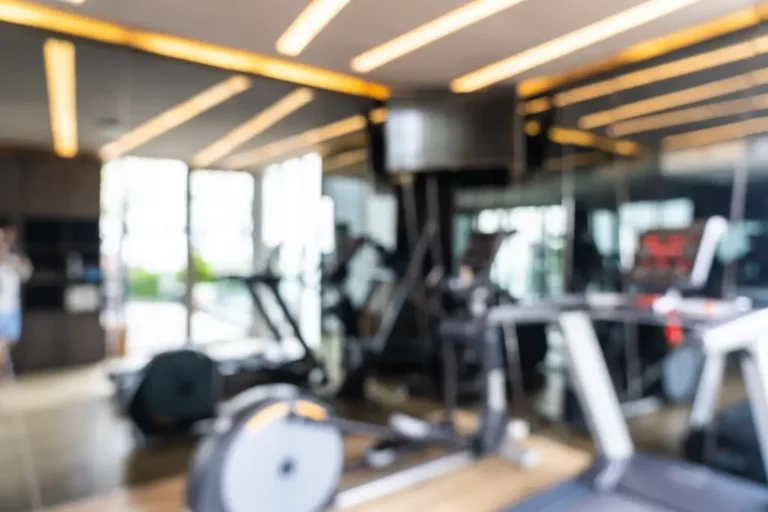Battle rope workouts have gained immense popularity in recent years, and for good reason.
When I first stumbled upon battle rope workouts, I couldn’t believe the incredible impact they had on my fitness journey. It was like discovering a hidden gem in the world of exercise routines. The feeling of those thick ropes in my hands, the rhythmic waves I created – it was a fitness experience unlike any other.
One of the things that kept me hooked on battle ropes was their ability to push my limits mentally and physically. Every session was a challenge, not just for my muscles but for my mental stamina as well. It’s the kind of workout that makes you dig deep, finding that extra reserve of strength and focus you never knew you had.
As I began incorporating battle rope exercises into my routine, I noticed significant changes in my body. My core became more defined, giving me that strong and stable foundation I had always wanted. My upper body developed strength and endurance that I hadn’t achieved with other exercises. And to my surprise, even my lower body felt the burn when I combined squats and lunges with the rope movements.
But what muscles do battle ropes work exactly? In this comprehensive guide, we will explore the muscles targeted by battle rope exercises and delve into the benefits they offer.
The Benefits of Battle Rope Workouts
Before we dive into the specific muscles worked by battle ropes, let’s first understand the overall benefits of incorporating battle rope workouts into your fitness routine. Battle ropes offer a unique form of exercise that provides several advantages:
- Full-Body Workout: Battle ropes engage multiple muscle groups simultaneously, providing a comprehensive workout for your entire body.
- Cardiovascular Endurance: The high-intensity nature of battle rope exercises elevates your heart rate, improving cardiovascular fitness and burning calories.
- Strength Building: The resistance provided by the ropes helps build strength in your muscles, including both upper and lower body.
- Improved Core Stability: Battle rope exercises require core engagement for stabilization, leading to improved core strength and stability.
- Mental Focus and Stamina: The intensity of battle rope workouts challenges your mental focus and stamina, enhancing your overall mental resilience.
Now that we understand the overall benefits of battle rope workouts, let’s explore the specific muscles targeted by these exercises.
Muscles Targeted by Battle Rope Workouts
Battle rope exercises engage a wide range of muscle groups throughout your body. By performing various movements with the ropes, you can effectively target and strengthen specific muscle groups. Here are the key muscle groups targeted by battle rope workouts:
1. Core Muscles
One of the primary benefits of battle rope exercises is their ability to engage and strengthen your core muscles. Your core plays a crucial role in stabilizing your body during battle rope drills. The dynamic movements involved in battle rope exercises challenge your core muscles to maintain balance and stability. The muscles targeted in the core include:
- Rectus abdominis: Located in the front of your abdomen, the rectus abdominis is responsible for flexing your spine.
- Obliques: The oblique muscles, located on the sides of your abdomen, aid in rotation and stabilization.
- Transverse abdominis: This deep muscle layer helps stabilize the spine and plays a crucial role in core stability.
2. Upper Body Muscles
Battle rope exercises heavily engage your upper body muscles, including the arms, shoulders, chest, and back. The undulating motions of the ropes require your upper body muscles to generate force, resulting in both strength and endurance gains. The muscles targeted in the upper body include:
- Biceps: The biceps, located on the front of your upper arms, are responsible for flexing the elbow joint.
- Triceps: The triceps, located on the back of your upper arms, are responsible for extending the elbow joint.
- Deltoids: The deltoid muscles, located on the shoulders, help raise and rotate the arms.
- Trapezius: The trapezius muscles, located in the upper back and neck, aid in shoulder movement and stability.
- Latissimus dorsi: The lats, located in the middle and lower back, assist in arm and shoulder movements.
- Pectoralis major: The pecs, located in the chest, are responsible for arm and shoulder movements.
3. Lower Body Muscles
Contrary to popular belief, battle rope exercises also engage the lower body muscles, especially when combined with movements such as squats and lunges. By incorporating lower body movements, you can target additional muscle groups and enhance the overall effectiveness of your workout. The muscles targeted in the lower body include:
- Glutes: The gluteal muscles, located in the buttocks, are responsible for hip extension and stabilization.
- Quadriceps: The quads, located on the front of the thighs, are responsible for knee extension.
- Hamstrings: The hamstrings, located on the back of the thighs, are responsible for knee flexion.
- Calves: The calf muscles, located in the lower legs, assist in ankle plantarflexion and stabilization.
4. Additional Muscle Groups
In addition to the core, upper body, and lower body muscles, battle rope workouts can also target other muscle groups, further enhancing the effectiveness of your training. These muscle groups include:
- Rotator cuff muscles: The rotator cuff muscles, located in the shoulder, help stabilize and rotate the shoulder joint.
- Quadratus lumborum: The QL muscles, located in the lower back, aid in trunk stability and lateral movement.
- Hip abductors: The hip abductor muscles, located on the sides of the hips, assist in hip abduction and stability.
Popular Battle Rope Exercises
Now that we understand the muscles targeted by battle rope workouts, let’s explore some popular exercises you can incorporate into your routine. These exercises provide a variety of movements that engage different muscle groups effectively:
1. Double Arm Waves
- Stand with your feet shoulder-width apart and hold one end of a battle rope in each hand.
- Keep your elbows close to your sides and begin to wave both ropes up and down simultaneously.
- Focus on using your shoulders and forearms to create the movement and keep your core tight throughout the exercise.
2. Alternating Waves
- Stand with your feet shoulder-width apart and hold one end of a battle rope in each hand.
- Alternate the movement of your arms, creating waves in the rope by lifting one arm as the other arm lowers.
- Maintain a steady rhythm and engage your core muscles for stability.
3. Snakes on the Floor
- Stand with your feet slightly wider than shoulder-width apart and hold one end of a battle rope in each hand.
- Lower into a squat position while simultaneously moving your arms sideways, maintaining parallel alignment.
- Visualize the ropes as snakes writhing on the floor, ensuring smooth and controlled movements.
4. Shoulder Circles
- Stand with your feet shoulder-width apart and hold one end of a battle rope in each hand.
- Lift your arms over your shoulders and start making circular motions with the ropes.
- Begin with clockwise circles, then switch to counterclockwise circles to engage different muscle fibers.
5. Side Slams
- Stand with your feet shoulder-width apart and face the anchor point of the battle rope.
- Hold the ropes in each hand and move both hands to one side of your body.
- Lift the ropes above your head and forcefully slam them down on the opposite side of your body.
- Alternate sides and repeat the motion for an intense core and upper body workout.
Conclusion
Battle rope workouts offer a unique and effective way to engage multiple muscle groups simultaneously. By incorporating these exercises into your fitness routine, you can strengthen your core, upper body, and lower body muscles while improving cardiovascular endurance. Remember to start with lighter ropes and gradually increase the intensity as you build strength and endurance. So, grab those battle ropes, make waves, and enjoy the full-body benefits of this dynamic and challenging workout.
Image by senivpetro on Freepik







